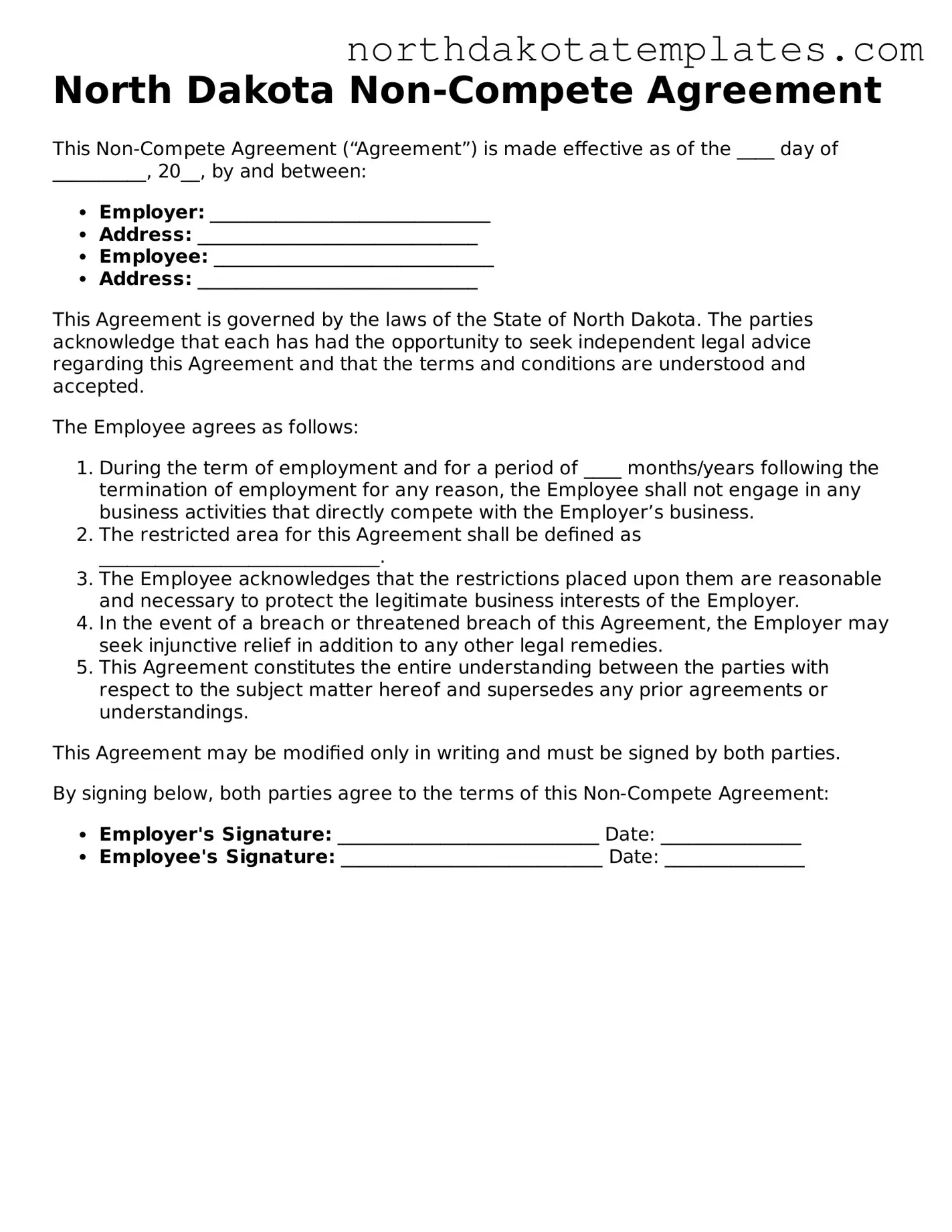What is a Non-compete Agreement in North Dakota?
A Non-compete Agreement is a legal contract between an employer and an employee. It restricts the employee from engaging in certain activities that may compete with the employer's business after leaving the company. In North Dakota, these agreements are designed to protect the employer's legitimate business interests, such as trade secrets and customer relationships.
Are Non-compete Agreements enforceable in North Dakota?
Yes, Non-compete Agreements can be enforceable in North Dakota, but they must meet specific criteria. The agreement should be reasonable in scope, duration, and geographic area. Courts will evaluate whether the restrictions are necessary to protect the employer's interests without unduly restricting the employee's ability to find work.
What factors determine the reasonableness of a Non-compete Agreement?
Several factors influence the reasonableness of a Non-compete Agreement in North Dakota. These include the length of time the employee is restricted from competing, the geographic area covered, and the nature of the work involved. Additionally, the court will consider whether the agreement protects legitimate business interests without imposing excessive limitations on the employee's future employment opportunities.
Can I negotiate the terms of a Non-compete Agreement?
Yes, you can negotiate the terms of a Non-compete Agreement before signing it. It's important to discuss any concerns you have regarding the restrictions. Employers may be willing to adjust the terms, especially if they want to attract qualified candidates. Always ensure that you fully understand the implications of the agreement before agreeing to it.
What should I do if I believe my Non-compete Agreement is unfair?
If you believe your Non-compete Agreement is unfair or overly restrictive, consider seeking legal advice. A legal professional can help assess the agreement's terms and determine whether it is enforceable. They can also guide you on potential options, such as negotiating the terms or challenging the agreement in court if necessary.
